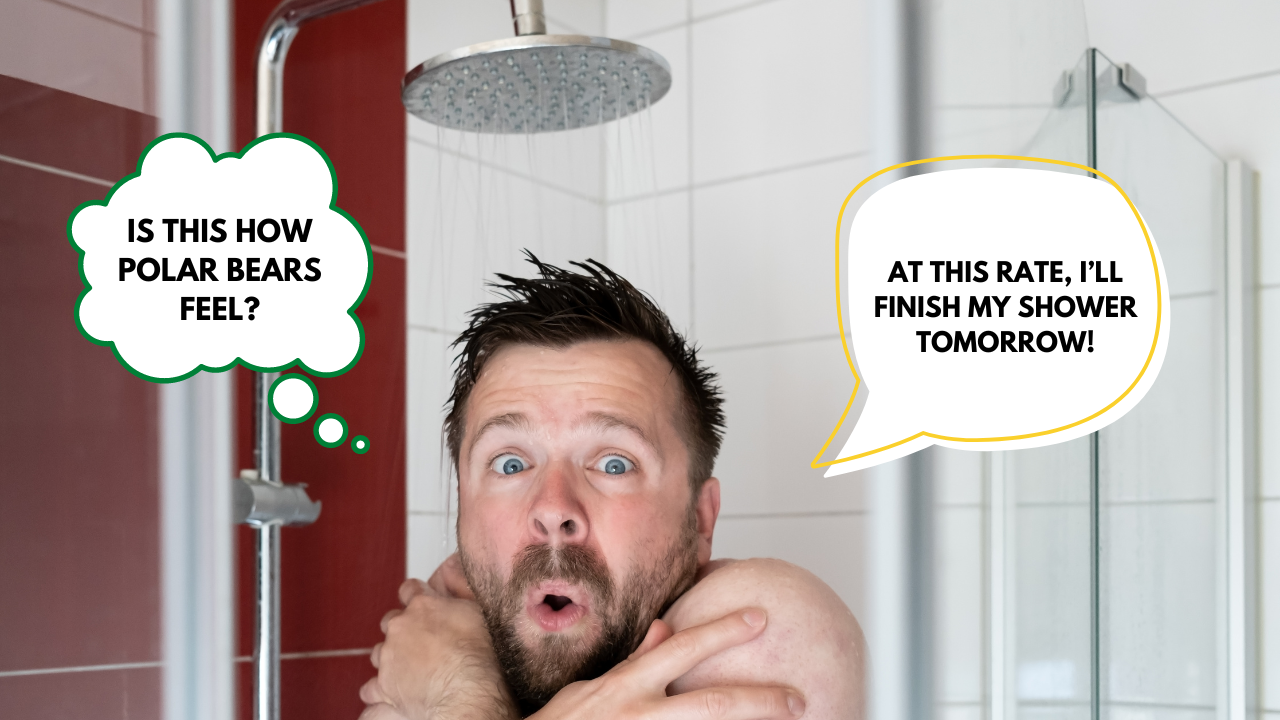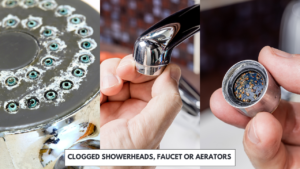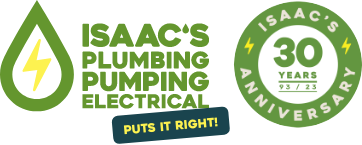
15 Oct Low Water Pressure with Hot Water? Don’t Call Your Plumber Yet
Nothing’s more annoying than turning on the shower and expecting a steady, soothing stream of hot water, only to get a trickle. If low water pressure with hot water has become a recurring issue in your home, you can check several common issues before calling a plumber.
Let’s walk through some of the six common reasons for low hot water pressure and what you can do about it.
1. Clogged Showerheads, Faucets or Aerators

Over time, the minerals in hard water can build up inside your showerhead, faucets, or even the small aerators – mesh or filter at the end of the tap, making it harder for water to flow as it should. This is common in the Hastings region, where certain water sources might have higher mineral content. The result? Weak water pressure when you turn on the hot tap.
How to fix it:
- Remove the showerhead or faucet and soak it in vinegar—a classic fix for mineral deposits.
- After soaking, give it a scrub to remove any stubborn residue, then rinse it thoroughly before reattaching.
A simple cleaning might be all it takes to get your hot water pressure back up to speed.
2. Check the Main Water Toby
Sometimes, the simplest solutions are the most effective. A common cause of low water pressure in homes can be the main water toby (valve) not being fully open. If it’s even slightly closed, the water flow throughout your home—both hot and cold—can be limited.
How to check:
- Find the main water toby, usually located where the water supply enters your property, often near the boundary line.
- Turn the toby all the way counterclockwise to make sure it’s fully open.
- It’s not uncommon for the toby to be left partially closed after routine maintenance or repairs. Double-checking could be all it takes to get your water pressure back to normal in no time.
3. Local Water Supply Issues
Low water pressure with hot water in your home can sometimes be linked to broader water supply issues in your local area. When local water systems are strained by ageing infrastructure, ongoing repairs, imposed water restrictions, or increased demand, fluctuations in supply can occur, resulting in reduced water pressure for homeowners.
What you can do:
- Check with your local council or water provider to see if maintenance work, supply restrictions, or system updates are affecting water pressure in your area. If you’re in Hastings you can check the Hastings District Council website or Central Hawkes Bay District Council if you’re in Hawkes Bay for notices or updates affecting your area. A quick check could save you time troubleshooting if the issue is outside your home.
- Reach out to your water supplier – If the issue persists and you’re not alone, it’s worth contacting your water provider to check if there’s a larger issue with the local supply.
4. Sediment in Your Water Heater
If your hot water pressure is low, sediment buildup in the water heater could be the cause. This issue is common across New Zealand, but in areas like Hawke’s Bay, particularly rural parts, the water quality can worsen sediment collection, causing even more pressure problems.
What to do:
- Flush your water heater to remove sediment buildup. This is a simple maintenance task that can help improve the water flow.
- Most water heaters have a drainage spout at the bottom—draining the tank helps get rid of the sediment buildup and keeps the system running smoothly.
Flushing the heater is especially important in regions with hard water. If the issue persists or seems more complicated, it’s worth having a local plumber check for hidden leaks, inspect the pressure regulator, or troubleshoot any other underlying problems.
Ignoring these issues doesn’t just lower your water pressure—it can lead to more costly repairs down the line.
5. Detect Hidden Leaks in Hot Water Systems
Leaks in your plumbing might be the sneaky culprit behind your low hot water pressure. What makes leaks tricky is that they’re not always obvious—some occur behind walls, under floors, or even around your hot water cylinder, gradually reducing pressure without any visible signs.
Catching these leaks early can save you from skyrocketing repair costs and help restore normal water pressure, especially in areas like Hawke’s Bay, where ageing infrastructure can make these issues even more common.
Here’s how to check for leaks:
- Check for damp spots, mould, or mildew in areas where plumbing runs, like under sinks or along baseboards. Warm, damp patches on walls or floors could indicate a hidden hot water pipe leak.
- Listen for unusual sounds like dripping or hissing when no taps are on—this can be a sign of a hidden leak in your system.
- Monitor your water bill for any unexpected spikes. A sudden increase without a clear cause may signal that water is escaping somewhere it shouldn’t be.
If you suspect a leak but can’t find it, or if the problem persists, it might be worth calling your local plumber. Leaks don’t just affect water pressure—they can lead to more significant damage down the line if left unresolved.
6. Check Your Pressure Regulator
It might sound a bit technical, but checking your pressure regulator doesn’t always require a plumber. In New Zealand, this handy device is usually located near the main water toby or where the water line enters your home.
How to check:
- Find the pressure regulator – Look for a round, bell-shaped device close to the main water toby or inside your home where the main water supply line enters.
- Give it a visual once-over and check for signs of damage, rust, or leaks around the regulator.
- Test the pressure – Household water pressure in New Zealand generally sits between 35-75 psi, though it can vary slightly by region. To check the pressure, grab a gauge and connect it to a hose tap. You might have a regulator issue if the pressure is outside this range.
- Leave adjustments to the pros – If you’re not confident enough tweaking the pressure regulator yourself, it’s best to get a plumber to handle it. Adjusting it incorrectly could make things worse.
Different areas across the country can have slightly varying pressure standards, so it’s always worth checking with your local council or water supplier if you’re unsure. A faulty regulator can throw your water pressure off, and it’s often an easy fix once identified.
When to Call Your Plumber for Help
If none of these fixes improves your low water pressure, it is time to call in a licensed plumber in your local area. Low water pressure could indicate a more serious issue, such as corroded pipes or a malfunctioning water heater.
Professional plumbers have the expertise to identify and solve tough plumbing issues, ensuring you don’t end up with bigger, more expensive repairs.
At Isaac’s Plumbing, we’ve been helping residents in the Hastings and wider Hawke’s Bay region with everything from minor fixes to major water pressure issues. Whether it’s a quick adjustment or more complex plumbing work, we’re familiar with the specific issues our local water systems face.
As part of Master Plumbers, you can count on us to handle your plumbing work and get your water flowing smoothly again without any hassle.
Call our plumbers in Hastings or Central Hawke’s Bay, and we’ll take care of the rest.
References:
- https://www.bobvila.com/articles/what-causes-low-water-pressure/
- https://www.plumbermag.com/how-to-articles/troubleshooting-hot-plumbing-jet/quick-jetter-tips-part-two-low-pressure_sc_01g6t
- https://www.familyhandyman.com/project/boost-low-water-pressure-in-your-house/

